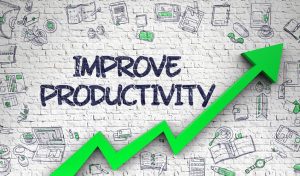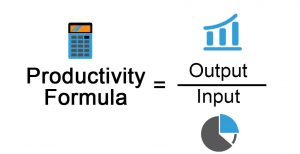
1. An unplanned day will never go well, unless it’s a day off.
The written to-do list is a physical record of what your rational intentions once were, before the emotional heat of the workday began to draw you to more appealing pursuits. You can disagree with this document, but if it exists, at least someone (You of the Past) is still offering a persistent, rational opinion that you’re better off outlining your term paper than reordering your cookbooks or finally learning to moonwalk. Without planning you cannot achieve productivity.
2. Getting a task 100% done today is twice as valuable as getting it to 90% done.
If you leave that last 10% of a big task for later, it will take most or all of the next morning. I don’t know how it grows overnight like that, but it does. It’s some kind of black magic, a curse for leaving today’s final mile to Tomorrow You.
3. The day’s productivity is determined not by how well you execute the plan, but by how well you adjust to difficulties in executing the plan.
Even though I make a plan for each day, I basically never have a day go according to plan. There are too many variables. Computers crash, tools break, moods and priorities shift. By afternoon my original to-do list is usually laughable. An alternate timeline.
Still, some days are far more productive than others, and the difference is how I respond to those unexpected factors as they come. An urgent email or a malfunctioning printer can derail the current plan in a second, but whether it derails the day depends on what the word “productivity” seems to mean at that moment.

4. There are no small diversions, because nearly all diversions result in other diversions.
Even though I know checking Instagram takes me only 45 seconds, I’m never back at work on that 46th second. It always, always, leads to more ostensibly negligible diversions – checking the mail, skimming an article, or sending a text. Yet the only way I can rationalize the “quick check” (as Cal Newport has named it) is by somehow believing it will only create a sterile 45-second hole in the workday.
There are probably no holes that small. Diversions lead directly to other diversions, because whatever force it was that got me to stop working for 45 seconds is the same force that will deflect me from getting right back to it afterward. The procrastinatory mind will react the same way to restarting as it just did to keeping going.
5. The distance between two very different states — Feeling Unable to Begin and Having Begun — seems vast but is actually very small.
Starting a task –- penetrating its thick hide to get at its guts — seems like it requires a vast amount of energy. You’ll want to take a good run at it, so you’d better do it first thing tomorrow. Better yet, Monday – take a weekend-long run-up at it. January 1st is even better.
This is another mirage.Before you’ve started a task, it looks like it’s bounded by barbed wire and thorny vines.
6. To-do lists and other self-regulatory messages are more effective if they are appealing to the eye.
We trust things that are clean and presented respectfully, and we dislike messes and halfhearted efforts.
When you feel repulsed by your own to-do list, you don’t want to look at it and you don’t want to do what it says. When the list is easy on the eyes, it feels more like the guiding star it’s supposed to be.
This principle extends to other written forms of self-instruction, such as sticky notes on the bathroom mirror reminding you to floss.
7. Likelihood of progress with psychologically difficult tasks increases as the Actual Start Time moves earlier in the day.
Procrastinatory forces feel like reverse-polarity magnets. You approach a dreaded task, having decided to tackle it first thing. When you get physically close to it, however, you slide sideways and fail to connect, instead snapping onto some other nearby thing — opening email instead of Word, reading a webcomic instead of a textbook.
That means you often don’t begin the work when you think you do. Sure, you got to the desk at 9:00 (actually 9:08), but ended up orbiting the task rather than landing on it, only making true contact at 9:47, 10:31, or just after lunch.

8. Tasks that look grim or painful from the outside usually do not look that way from the inside.
There is a great mirage the career procrastinator eventually recognizes and must remember to challenge. Tasks that look horrible from the outside usually aren’t like that on the inside.
It’s easy to balk forever at starting an unpleasant task. You feel bad enough, so you certainly don’t want to climb inside the unpleasantness by starting. Yet you’ve probably discovered again and again that you feel better shortly after you start. That’s the illusion procrastinators must learn to see through: you don’t need to finish the task to feel better, you only need to finish not doing the task.
9. When you’re struggling with the intended task, it’s usually better to work on something else than to let the session grind to a halt.
The typical productivity advice is to be unwavering in your intentions. When the going gets tough, stick to the plan and compromise nothing.
I don’t think this is good advice for everybody. Part of what keeps procrastinators procrastinating is the belief that working is more painful than avoiding productivity. This is usually untrue, but it becomes true when you grind away fruitlessly on a task just because you happened put it on your list today. If your wheels are really spinning, it’s usually better to switch to another productive (but less miserable) task.
In other words, choose productivity over loyalty to your original intention. Do something else, get the momentum up, and by the afternoon, or tomorrow, the task will seem less impenetrable.
Sometimes a hard deadline makes task-switching unfeasible, but when you have the flexibility, it’s usually better to be productive instead of uncompromising.











